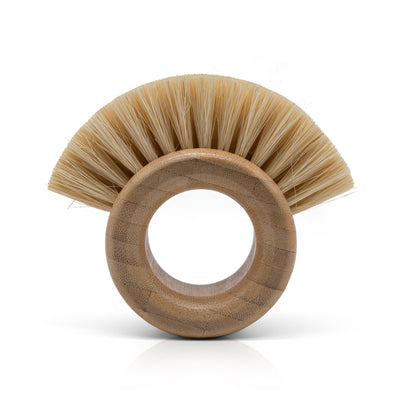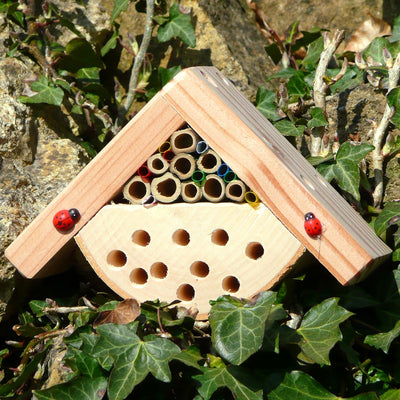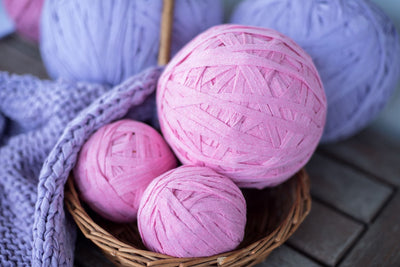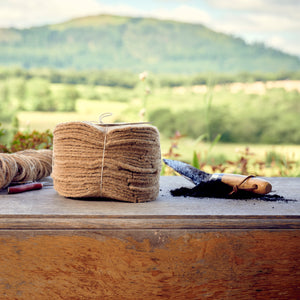By creating an account with our store, you will be able to move through the checkout process faster, store multiple shipping addresses, view and track your orders in your account and more.



Product description & details
Why is this Peat-Free Wool Compost for Seeds so great?
This Peat-Free Wool Compost for Seeds is brilliant for growing flowers and produce from seed. It provides a firm foundation for a healthy start in plant life with a gentle sustained feeding to take plants through to potting on. The compost is fine textured and is perfectly formulated for strong and healthy seed germination, seedling growth and essential root-ball development. We’ve had great success with it when growing from seed. Here are a few reasons why it is so wonderful:
- Completely peat-free – this compost is 100% peat-free which means it has great environmental benefits (you can read more about that below!). We have found that it works just as well, if not better, than compost containing peat and even has a similar soft texture.
- Has added ‘Bocking 14’ Comfrey – Comfrey is a ‘dynamic accumulator’, rich in essential nutrients. It is a fantastic fertiliser and is a healing herb so offers seedlings a fantastic rehabilitative nutrient boost. It is particularly good for stressed or damaged roots.
- Contains wool – like some of our other gardening products such as our garden felt and shillies, this compost contains WOOL! Wool is such a brilliant material to use in your garden for lots of reasons. In this compost specifically, wool helps the compost retain water naturally due to wool’s hygroscopic properties (which means less watering for you!). The wool is also full of slow-releasing nitrogen which, as we already know, is really important for strong plant growth.
- Includes bracken – bracken is FULL of potash (potassium) which is essential for fruiting and flowering. It promotes healthy growth and provides growing plants with the essential trace elements & minerals. It also toughens growth in order to resist pests and diseases whilst increasing a plant’s resistance to drought or extreme cold.
- Social Association approved – the compost is sustainably made from renewable, natural ingredients on Dalefoot Farm in the Lake District and is approved for organic growing by the Soil Association.
How can I use this Peat-Free Wool Compost for Seeds?
This Peat-Free Wool Compost is a compost especially for planting seeds and seedlings. It isn’t too rich and instead provides a gentle sustained feed to ensure strong germination rates and a healthy root growth.
To use this compost for seeds follow the following steps:
With gardening gloves on, loosely fill clean seed trays or pots with compost for seeds and gently tamp the mixture down.
Then, gently water the top of the compost with a spray bottle or watering can fitted with a fine rose.
Next, sow seed sparingly. This will make it easier to prick out later. Always remember follow the instructions on the seed packet!
Remember to label each one with the seed variety and the date sown. Then, place your trays or pots on a warm windowsill, in the greenhouse or in a propagator.
All you need to do is wait with eager anticipation!
When your seedlings are ready to pot or plant out, use the Peat-Free Wool Compost for Potting which will ensure your plants continue on their healthy growth trajectory. You may also want to pair this with some extra natural protection such as our Jute Mulch Mats, Felt Shillies or Wool Gardening Felt.
What is peat?
Peat, as defined by the International Peatland Society, is “Peat is the surface organic layer of a soil that consists of partially decomposed organic matter, derived mostly from plant material, which has accumulated under conditions of waterlogging, oxygen deficiency, high acidity and nutrient deficiency”. It is formed in bogs, over thousands of years and is thick and muddy!
Peatlands make up around 12% of the UK and when in good condition store significant amounts of carbon, as well as providing a quarter of the UK’s drinking water and being rich in rare and endangered plants and animals.
Over the last century, the International Union for Conservation of Nature estimates 80% of the UK’s peatlands are in a damaged and deteriorating condition having been modified as a result of present and past land management activities, including extraction for horticulture and draining for agricultural improvement. This is bad news! Keep reading and we’ll explain why.
Why is it important to protect peat?
As we mentioned above, peat takes many years to form which means that the loss of peat through harvesting for horticulture and agriculture is irreversible over human timescales. Using products containing peat is completely unsustainable.
Reducing the amount of peat in our environment could be detrimental because it plays such a number of important roles in our ecosystem:
- Acts as a carbon store – peat is a brilliant carbon store. In upland blanket bogs, the predominant UK peatland type, the peat layer is typically 1–5 m thick and every square metre contains 40–200 kg of carbon. To put that into context, it is estimated that over 3 billion tonnes of carbon are stored in UK peatlands currently, which is equivalent to all the carbon stored in forests in the UK, Germany and France combined. On a global scale, the remaining areas of near-natural peatland) contains more than 550 gigatonnes of carbon. The world’s forests sequester about 0.37 gigatonnes of CO2 a year. Pretty mind-blowing right? However, when it is cultivated, the peat bogs start to dry out which releases the carbon stored as carbon dioxide into the environment. This, as we all know, speeds up global warming and climate change – not good! Degraded UK peatland is responsible for around 5% of the UK’s greenhouse gas emissions. By retaining and establishing peat bogs we can not only help reduce our emissions but also start to capture the carbon that is being released into the environment in other forms.
- Helps with water management – peat plays an important role in the hydrological cycle helping to maintain water quantity and quality. It can hold up to 20 times its own weight in water and according to the ONS, in the UK alone, peatland represents 27% of the UK ecosystem service accounts. Its ability to hold such huge amounts of water helps it to regulate water flows, playing a key role in flood prevention. This is something more and more of us in the UK (and globally) are suffering with due to the effects of global warming, and it is being made worse by the reduction of peat in our environment.
- Provides important habitats – peat bogs provide unique, natural habitats for many scarce species as well as a wide range of nationally and internationally important flora and fauna. They support species such as carnivorous sundew plants and uncommon insects like large heath butterflies, four-spotted chaser dragonflies and picture-winged bog craneflies. These have seen dwindling numbers due to the decrease in wet peatland areas which has a wider impact on our ecosystem.
- Acts as a vital historic record of the land – peat contains vital and unique historical evidence of an area and its inhabitants. It preserves a record of past vegetation, pollen counts, landscapes and people. You may wonder why that is important? Well, for historical research it is very important but it also acts as a very good indicator of how the landscape has changed over the years and what we need to be doing to restore it.
So, as you can see, peat is very important to protect, and as consumers, we can help to protect it by choosing peat-free gardening products. In fact, the UK Government are committed to halting the use of peat in horticulture in England by 2030. From 2024, the sale of peat for use on private gardens and allotments will be banned in England There will also be a final voluntary phase-out target of 2030 for professional growers of fruit, vegetables and plants. So why wait? Make the change now! Many growers and producers of plants are now using this compost as an alternative to peat, with excellent results, so we promise, your garden will still be blooming beautiful when you make the switch.
Why is this Peat-Free Wool Compost for Seeds so great?
This Peat-Free Wool Compost for Seeds is brilliant for growing flowers and produce from seed. It provides a firm foundation for a healthy start in plant life with a gentle sustained feeding to take plants through to potting on. The compost is fine textured and is perfectly formulated for strong and healthy seed germination, seedling growth and essential root-ball development. We’ve had great success with it when growing from seed. Here are a few reasons why it is so wonderful:
- Completely peat-free – this compost is 100% peat-free which means it has great environmental benefits (you can read more about that below!). We have found that it works just as well, if not better, than compost containing peat and even has a similar soft texture.
- Has added ‘Bocking 14’ Comfrey – Comfrey is a ‘dynamic accumulator’, rich in essential nutrients. It is a fantastic fertiliser and is a healing herb so offers seedlings a fantastic rehabilitative nutrient boost. It is particularly good for stressed or damaged roots.
- Contains wool – like some of our other gardening products such as our garden felt and shillies, this compost contains WOOL! Wool is such a brilliant material to use in your garden for lots of reasons. In this compost specifically, wool helps the compost retain water naturally due to wool’s hygroscopic properties (which means less watering for you!). The wool is also full of slow-releasing nitrogen which, as we already know, is really important for strong plant growth.
- Includes bracken – bracken is FULL of potash (potassium) which is essential for fruiting and flowering. It promotes healthy growth and provides growing plants with the essential trace elements & minerals. It also toughens growth in order to resist pests and diseases whilst increasing a plant’s resistance to drought or extreme cold.
- Social Association approved – the compost is sustainably made from renewable, natural ingredients on Dalefoot Farm in the Lake District and is approved for organic growing by the Soil Association.
How can I use this Peat-Free Wool Compost for Seeds?
This Peat-Free Wool Compost is a compost especially for planting seeds and seedlings. It isn’t too rich and instead provides a gentle sustained feed to ensure strong germination rates and a healthy root growth.
To use this compost for seeds follow the following steps:
With gardening gloves on, loosely fill clean seed trays or pots with compost for seeds and gently tamp the mixture down.
Then, gently water the top of the compost with a spray bottle or watering can fitted with a fine rose.
Next, sow seed sparingly. This will make it easier to prick out later. Always remember follow the instructions on the seed packet!
Remember to label each one with the seed variety and the date sown. Then, place your trays or pots on a warm windowsill, in the greenhouse or in a propagator.
All you need to do is wait with eager anticipation!
When your seedlings are ready to pot or plant out, use the Peat-Free Wool Compost for Potting which will ensure your plants continue on their healthy growth trajectory. You may also want to pair this with some extra natural protection such as our Jute Mulch Mats, Felt Shillies or Wool Gardening Felt.
What is peat?
Peat, as defined by the International Peatland Society, is “Peat is the surface organic layer of a soil that consists of partially decomposed organic matter, derived mostly from plant material, which has accumulated under conditions of waterlogging, oxygen deficiency, high acidity and nutrient deficiency”. It is formed in bogs, over thousands of years and is thick and muddy!
Peatlands make up around 12% of the UK and when in good condition store significant amounts of carbon, as well as providing a quarter of the UK’s drinking water and being rich in rare and endangered plants and animals.
Over the last century, the International Union for Conservation of Nature estimates 80% of the UK’s peatlands are in a damaged and deteriorating condition having been modified as a result of present and past land management activities, including extraction for horticulture and draining for agricultural improvement. This is bad news! Keep reading and we’ll explain why.
Why is it important to protect peat?
As we mentioned above, peat takes many years to form which means that the loss of peat through harvesting for horticulture and agriculture is irreversible over human timescales. Using products containing peat is completely unsustainable.
Reducing the amount of peat in our environment could be detrimental because it plays such a number of important roles in our ecosystem:
- Acts as a carbon store – peat is a brilliant carbon store. In upland blanket bogs, the predominant UK peatland type, the peat layer is typically 1–5 m thick and every square metre contains 40–200 kg of carbon. To put that into context, it is estimated that over 3 billion tonnes of carbon are stored in UK peatlands currently, which is equivalent to all the carbon stored in forests in the UK, Germany and France combined. On a global scale, the remaining areas of near-natural peatland) contains more than 550 gigatonnes of carbon. The world’s forests sequester about 0.37 gigatonnes of CO2 a year. Pretty mind-blowing right? However, when it is cultivated, the peat bogs start to dry out which releases the carbon stored as carbon dioxide into the environment. This, as we all know, speeds up global warming and climate change – not good! Degraded UK peatland is responsible for around 5% of the UK’s greenhouse gas emissions. By retaining and establishing peat bogs we can not only help reduce our emissions but also start to capture the carbon that is being released into the environment in other forms.
- Helps with water management – peat plays an important role in the hydrological cycle helping to maintain water quantity and quality. It can hold up to 20 times its own weight in water and according to the ONS, in the UK alone, peatland represents 27% of the UK ecosystem service accounts. Its ability to hold such huge amounts of water helps it to regulate water flows, playing a key role in flood prevention. This is something more and more of us in the UK (and globally) are suffering with due to the effects of global warming, and it is being made worse by the reduction of peat in our environment.
- Provides important habitats – peat bogs provide unique, natural habitats for many scarce species as well as a wide range of nationally and internationally important flora and fauna. They support species such as carnivorous sundew plants and uncommon insects like large heath butterflies, four-spotted chaser dragonflies and picture-winged bog craneflies. These have seen dwindling numbers due to the decrease in wet peatland areas which has a wider impact on our ecosystem.
- Acts as a vital historic record of the land – peat contains vital and unique historical evidence of an area and its inhabitants. It preserves a record of past vegetation, pollen counts, landscapes and people. You may wonder why that is important? Well, for historical research it is very important but it also acts as a very good indicator of how the landscape has changed over the years and what we need to be doing to restore it.
So, as you can see, peat is very important to protect, and as consumers, we can help to protect it by choosing peat-free gardening products. In fact, the UK Government are committed to halting the use of peat in horticulture in England by 2030. From 2024, the sale of peat for use on private gardens and allotments will be banned in England There will also be a final voluntary phase-out target of 2030 for professional growers of fruit, vegetables and plants. So why wait? Make the change now! Many growers and producers of plants are now using this compost as an alternative to peat, with excellent results, so we promise, your garden will still be blooming beautiful when you make the switch.
Dalefoot Peat Free Wool Compost for Seeds




Wool
Made in the UK
Sustainable
Compostable
Give your seeds the best chance by using this Dalefoot Peat-Free Wool Compost for Seeds! This compost has a fine texture with good drainage to provide a perfect start for seeds. Not only is it 100% peat-free and organic, but it also contains a specially blended mix of nutrients that provides a strong germination rate and a balanced first feed. It contains Comfrey's ‘Bocking 14’ variety as well as high levels of potassium, phosphorous & nitrogen for healthy plant growth, larger flowers & bigger crops.
Size: 12 Litres (sufficient for 2 trays of seedlings)
£12.00
In Stock
You may also like these...
Standard delivery
- Free when you spend over £40 or £3 for orders under £40.
- Delivered within 2-4 working days from the date of dispatch.
- Smaller items will be delivered using Royal Mail 48. Larger items will be delivered by Fedex or ParcelForce.
- Delivery Monday to Saturday (excluding bank holidays).
Expedited delivery
- £6 for all orders.
- A fully tracked service, delivered within 1-3 working days, from the date of dispatch.
- Smaller items will be delivered using Royal Mail 24. Larger items delivered via FedEx or ParcelForce.
- Delivery Monday to Saturday (excluding bank holidays).
Returns
- We have a 60-day return policy, which means you have 60 days after receiving your item to return it.
- To be eligible for a return, your item must be in the same, re-sellable condition that you received it, unused, with tags, and in its original packaging. You’ll also need the receipt or proof of purchase.
- The postage cost for the return will need to be covered by yourself (please keep the proof of postage until your return has been processed).
At the core of Chimney Sheep is our Community Interest Company, Buy Land Plant Trees (BLPT). For every purchase you make with us, 10% of the profit facilitates the planting of trees on agriculturally poor land in Cumbria.
We set up BLPT in 2019 as a ‘boots on the ground’ tree planting initiative. The company is run by us and the tree planting is done by us. We do it to help you and us to reduce our impact on the planet. The trees we plant reduce CO2 output as well as contribute to the reduction of flooding and the creation of habitats for wildlife.
BLPT isn’t a tick box exercise nor a distant and detached carbon offset company. In fact, this is as much part of our business as the products we sell and is an integral part of our ethos. We are big believers in the phrase ‘think globally, act locally’ and want to make a genuine difference
Customer Reviews
Never found a better seed compost in 50 years of growing.
Unfortunately the wool seed compost was absolutely useless-approx 90% of the seeds failed to germinate-and they were from various suppliers, so not necessarily the fault of the seeds. This even included courgettes-which usually germinate as soon as they hit the compost! so won,t be buying this agin-sorry.
A really, really good seed compost, all without Peat! , my new favourite, glad I tried, Its been great for both herb and general seed, awesome!
Sustainable Gardening Products

Join The Flock
Receive energy saving tips, gardening advice, news about our latest products, progress updates on our Buy Land Plant Trees initiative and exclusive access to our secret sales!
























